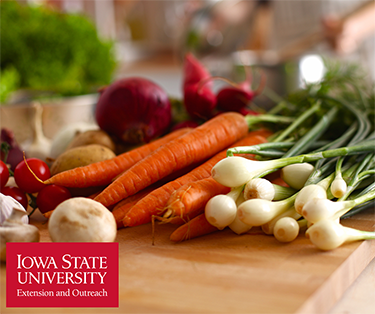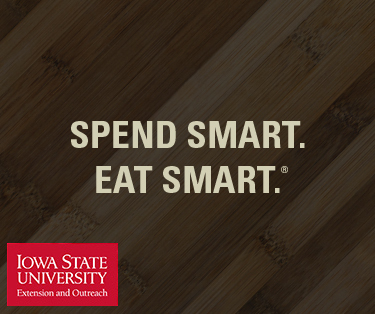Blog

Storing Fruits and Vegetables to Reduce Food Waste
Last week Katy shared about how she uses canned and frozen fruits and vegetables, along with fresh, in her meals, to help stretch her grocery budget. Today I want to share a few tips and resources on storing produce. Storing fruits and vegetables properly will help them last longer and taste better. The longer produce lasts, the longer you have to use it before it goes bad and it has to be thrown out. Food wasted is money wasted and we want to limit both of those!

Is fruit really too expensive?
On a recent shopping trip, I started thinking about the cost of produce—bananas to be specific. It seems their cost has really skyrocketed over the past few years. I’m probably dating myself by admitting that I remember when I could buy bananas for 25 cents a pound! On this shopping trip to a big box store, the cost was 64 cents a pound. Well, it’s no wonder families are tempted to buy snack food to satisfy their hungry members instead of produce. So, being a home economist, I decided to do a comparison. I bought 5 bananas that weighed 1.71 pounds; the cost was $1.09. That meant that each banana cost between 20 and 21 cents each.

Do the new “green bags” really keep food fresh?
The “green bags” are designed for fruits and vegetables that ripen by the production of the plant hormone, ethylene. Ethylene gas is produced in copious quantities by certain fruits, most notably bananas. As the concentration of ethylene gas increases in an enclosed environment, the fruit ripens faster. Removal of ethylene helps keep fruits from over-ripening quickly. The green bags are made of a polymer that allows the escape of the gas while keeping others, and some of them actually use additives to the film to absorb other gases that promote ripening or deterioration.

Fruit Kabobs—Look Elegant, Taste Great, Kid-Friendly
Sometimes it’s the way you present food that makes it special. Fruit Kabobs are an example. You could chop fruits up and stir the yogurt in, but it wouldn’t look this good.

Lunchtime Solutions
Do you regularly pack a lunch? It saves money, but until you make it part of your regular routine, it can be a hassle. My husband and I want the health and money saving benefits of taking lunch from home, but often are too unorganized, lazy, short on time, or whatever to consistently get something together either the night before or in the morning. Here’s what we’ve done:

Farmers Markets = Fresh Produce
Did you know there are more than 212 farmers markets located in communities across the state with direct access to Iowa’s nutritious, affordable and delicious products?

Blueberries – I love ‘em!
Early in July I head to my favorite ‘you-pick’ blueberry farm and enjoy those delicious fresh berries! I don’t have the time or space to grow my own berries, so I’m happy others grow them for us to pick. Grocery stores are running specials of under $2.00 a pint; but, at one pick-your-own operation in SE Iowa, they were $2 a quart if you did the picking or $4 a quart if you bought them in the box. I get satisfaction from picking them myself, and knowing they were produced locally is well worth the price I pay.

What can you buy for $6?
One great change in the food that families receive from WIC is vouchers for fruits and vegetables. The amount of the voucher varies, but as I understand it, each child on WIC old enough to eat table food gets a $6 voucher each month. Amanda and I headed to the grocery store last Friday to see what $6 would buy. We were in luck because lots of fruits and vegetables were on sale.

Can a Vegetable Garden Save You Money?
That’s the title of an article by Cindy Haynes, Extension Horticulturalist. Her answer was “yes” – if done correctly. She goes on to quote a book about $64 tomatoes.

Save money and don’t heat up your kitchen–cook on the grill!
We have lots of rain and heat in Iowa this summer (it seems like a sauna). And, since I try to use the air conditioner as little as possible, the thought of adding to the heat by starting the oven doesn’t appeal. Grilling is my answer. It keeps the house cooler, I have fewer dishes to wash, and food from the grill tastes good.

Waldorf Summer Salad
WOW, what an easy salad and one that kids love (it’s the marshmallows).

Tomatoes…Yum! Doesn’t matter if they are a fruit or a vegetable
Remember that old argument…is a tomato a fruit or a vegetable? Here’s the answer. BOTH. Botanically speaking, the tomato is a fruit. A “fruit” is any fleshy material covering a seed or seeds. Horticulturally speaking, the tomato is a vegetable plant. The plant is an annual and non-woody. (Source: Produce Marketing Association and the Produce for Better Health Foundation.)

